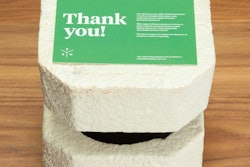
Or maybe you are able to operate complicated machinery and quote line speeds in your sleep. If you are in packaging on the brand side, your focus might be on how the packaging presents the product on shelf, or perhaps you are charged with creating efficiencies in the supply chain. All great things, but packaging serves two masters.
Packaging is essentially a Consumer Packaged Goods company’s hardest working employee, a true brand ambassador. Serving the product, along with the corporate agenda and logistics, is a given. Ultimately, however, packaging must serve the consumer. Packaging should be designed for people, not products. Will your packaging disappoint or delight?
Packaging is the one piece of marketing and branding that gets to live alongside the consumer in the home. Play nice and your brand stands a good chance of being invited back. Studies have shown that packaging has a significant impact on initial and repeat purchase behaviors. Shelf pop and clear communication in those few seconds a package has the opportunity to catch a consumer’s eye is important. Beyond that, function is critical.
What do consumers want most from packaging? Ease of use, convenience—functional properties. In what area are consumers least satisfied with packaging overall? Ease of use, convenience—functional properties. Where’s the disconnect?
Consumers are the end users, and yet conducting hands-on, in-home packaging research with consumers is not always top of mind when timelines and budgets are crunched. What some fail to realize is that investing upfront in consumer insights can uncover opportunities, decipher challenges, and prevent major missteps. The right packaging can strengthen brand image, create new usage occasions, increase consumption, add value, and delight the consumer.
Delighting the consumer sounds simple, but is it? It can be. The following tips show how:
• Make it quick to find and identify. Color and messaging are top of mind, but form (shape) also plays into that split-second communication. Is it unique, disruptive, or one of the crowd? Some iconic brands can be identified in silhouette. Make the shape consistent with the product and brand. A hard-core cleaning agent is not likely to be perceived as intended in a curvy, feminine bottle. Prevent the disconnect.
• Get picked up. At shelf, can the shopper grab your package with one hand? Or does it require two? (Does that busy mom drop the child or the phone?) Pull people in. Get them to touch the package and you are much closer to being chosen. Soft-touch package finishes have received a lot of attention lately.
• Try to fit in at home. Packaging should be easily stored and accessible. It should appeal to the purchaser when they “shop” the pantry or the refrigerator—competition continues at home.
• People want easy. Packaging should be intuitive—no instructions required. It should be easy to open every time, for everyone (as appropriate—children, seniors, those with vision or dexterity challenges, etc.). Accessing the product should be simple whether it is by reaching in (will a man’s hand fit?), pouring (does it pour smoothly or splash?) or shaking (does the flip-top lid fall down and block the opening?).
• Keep it neat. It should look nice and not messy, torn or crumpled after use (even in the pantry). Quality counts in how it represents the brand.
• Protect the product, all of it. Deliver a fresh product and help people keep it that way. Without a secure reclose or reseal feature, there can be waste and added aggravation. Or consumers simply transfer your product to another container and toss the brand identity.
• Less is more. Avoid over-packaging and make it easy for those consumers who embrace environmentally friendly practices to do so.
Ask, explore, understand—that is qualitative research. From consumers, we learn what they like and don’t like, what works and what doesn’t. We can also learn from and find inspiration in their organic behaviors and how they compensate for shortcomings. Through interactive ethnography, in-home use tests, consumer conversations, and other research methods available to you through a professional consultant, the path to delight emerges.


























